Plants of the Past: Horfield Common
What did Horfield Common and the surrounding area look like in the past? (a work in progress)
So much can be told about a location by the presence of plants. Different species require different conditions. Some are extremely fussy and confined to very precise habitats and others are generalists; but most have broad preferences. They can indicate soil and habitat type and they can tell us what other organisms are likely present - as the larval food sources of many invertebrates and intern the very predators which are reliant upon them. Every species has its own unique imprint in ecology and the same can be said in reverse. The habitats and the consumers can also indicate the producers. But in today's much changed landscape it can be a challenge. This is where visual sources such as old maps (see Know Your Place) and photos are a great help.
Anyone who's visited Horfield Common will know just how muddy it gets in the winter. It is virtually a bog! On a quieter day; Gulls, Crows, Magpies, Starlings and Wood Pigeons - the tougher birds - congregate to feed on the glut of Worms and Leather-jackets - surfacing after heavy rain and if it wasn't for the shear number of people and dogs; Geese and Waders would too no doubt flock the place. Much of the common was dug with a network of clay land draining systems in the early 1900s so prior to this the land would have been even boggier! Under these conditions a wet meadow flora composition would have prevailed. Some of which still remains today: Cuckoo Flower (the rare white form in this case occurs in small quantities), Meadow Buttercup, Creeping Buttercup, Meadow Fox-tail, Meadowsweet and Hairy Sedge. Additional specialists: Pepper Saxifrage, Strawberry Clover, Greater Bird's-foot Trefoil, Hard Rush are extinct today but are known to have occurred thanks to old records and by observing closely matched sites nearby such as Purdown and Stoke Park.
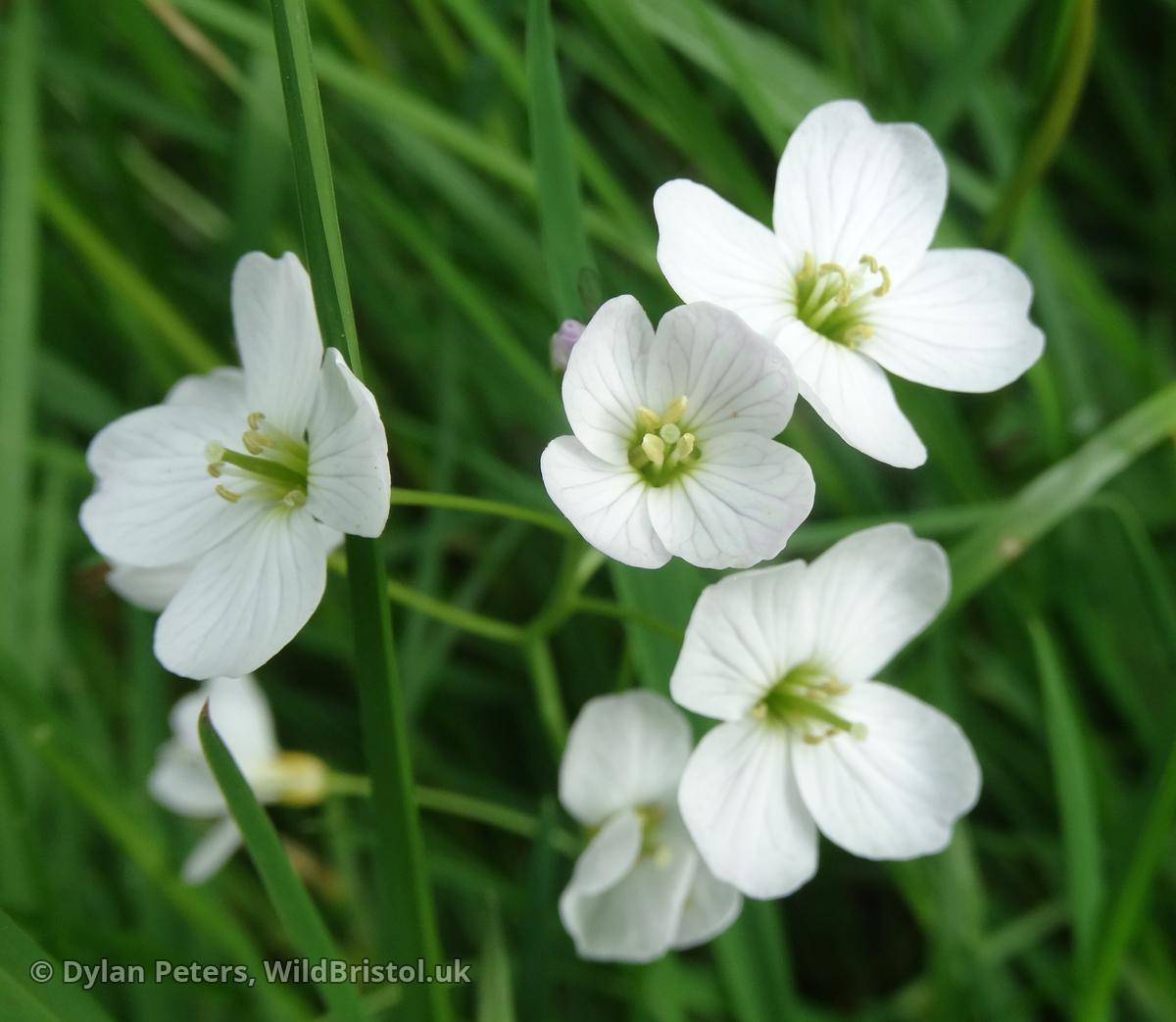
Other more generalists included: Red Clover, Tufted Vetch, Meadow Vetchling - all three still occur in small quantities. And Field Wood-rush and Glaucous Sedge are both extinct today but occur in a number of nearby locations.
In the drier parts posed by higher elevation - the plateau of ground; heading towards the leisure centre would not have been too dissimilar to parts of the downs - Smaller Cat's-tail, Crested Dog's-tail, Red Fescue, Sweet Vernal-grass and Smooth Meadow-grass, Bulbous Buttercup, Selfheal, Cat's-ear, Rough Hawkbit, Black Knapweed and Common Sorrel would have been typical.
Hedgerows contained Common Hawthorn, Blackthorn, English Elm, Hazel, Elder, Buckthorn, Dog-rose, intertwined with Black Bryony, Wild Clematis, Hedge Bindweed and Common Ivy with: Crosswort, Reed Canary-grass, Cow Parsley, Lord's-and-ladies, Cleavers, Hedge Bedstraw, Garlic Mustard, Herb-Robert, Ground Ivy, Musk Mallow on the hedge-banks.
Cornfields surrounded the common from the North West to the East.
- Lathyrus Aphaca L. (Yellow Vetchling) - "Horfield; T. B. Flower."
- Melilotus indicus (Small Melilot) - Horfield and Charlton
- Euphorbia platyphyllos (Broad-leaved Spurge) - Euphorbia platyphyllos L. (Broad-leaved Warted Spurge) - "Beanfield between Horfield and Filton, 1849; and cornfields, Charlton, 1850 and 1851; J. H. Cundall, Cornfield on the Horfield side of Filton Meads, in plenty from 1879 to 1884 or thereabout. Since that time the field has ceased to be arable. But the plant still occurs rarely amongst crops by the field-path leading to Brentry and Charlton." - Brist. Fl.
- Thlaspi arvense (Field Penny-cress) "Formerly in cornfields about Horfield, for several years; but not seen of late." - Brist. Fl.
- Spergula arvensis ssp. arvensis (Corn Spurrey) - "Stapleton and Horfield; Swete." - Brist. Fl.
- Lysimachia foemina (Blue Pimpernel) - "Cornfield at Horfield, 1840; T. B. Flower, Horfield 1843;
- Galium tricornutum (Corn Cleavers) - "Stapleton and Horfield; Herb. Stephens. Cornfield between Horfield Common and Filton Meads, abundant in 1883 and 1885 on land that has now gone out of cultivation. Still among crops by the field-path from Filton Meads to Brentry and Charlton."
- Echium vulgare L. (Viper's Bugloss) - "Cornfields at Horfield and Stapleton; Swete, Fl."
- Chaenorhinum minus ssp. minus (Small Toadflax) - "Cornfield between Horfield and Filton, 1888."
- Kickxia elatine ssp. elatine (Sharp-leaved Fluellen) - "Horfield; T. B. Flower in Phytol. (1840); and Herb. Stephens."
- Kickxia spuria ssp. spuria (Round-leaved Fluellen) - "Cornfields at Horfield, 1840; T. B. Flower, and G. H. K. Thwaites in Swete, Fl."
- Centaurea cyanus L. (Cornflower) - "Horfield; Swete, Fl."
- Filago germanica L. (Common Cudweed) - "Fields between Horfield and Brentry."
- Glebionis segetum (Corn Marigold) - "occasionally in cornfields at Horfield; Swete, Fl. p. 50."
- Valerianella dentata Poll. (Narrow-fruited Cornsalad) - "Horfield; G. H. K. Thwaites."
- Torilis arvensis ssp. arvensis (Spreading Hedge-parsley) - "Cornfields about Horfield; Swete, Fl."
Small remnants of woodland and copses.
Wood Meadow-grass (Poa nemoralis) and Pale Sedge (Carex pallescens) - are mentioned in the Bristol Flora as occurring in a "Copse between Horfield and Filton." This no doubt is referring to Horfield Wood.
Greater Butterfly-orchid (Platanthera chlorantha) was "Formerly plentiful on the Southmead side of Filton, in a small wood which has been destroyed." This is referring to a small wood which is now under part of Southmead Hospital.
Topped off with ponds and ditches dotted throughout - home to a whole host of aquatics including: Watercress, Brooklime, Yellow Flag Iris, Water Forget-me-not, Reed Sweet-grass, Plicate Sweet-grass and even Whorl Grass (nationally scarce today and very rare in Bristol) with Meadowsweet, Square-stalked St. John's-wort, Redshank and Wild Angelica on the margins.
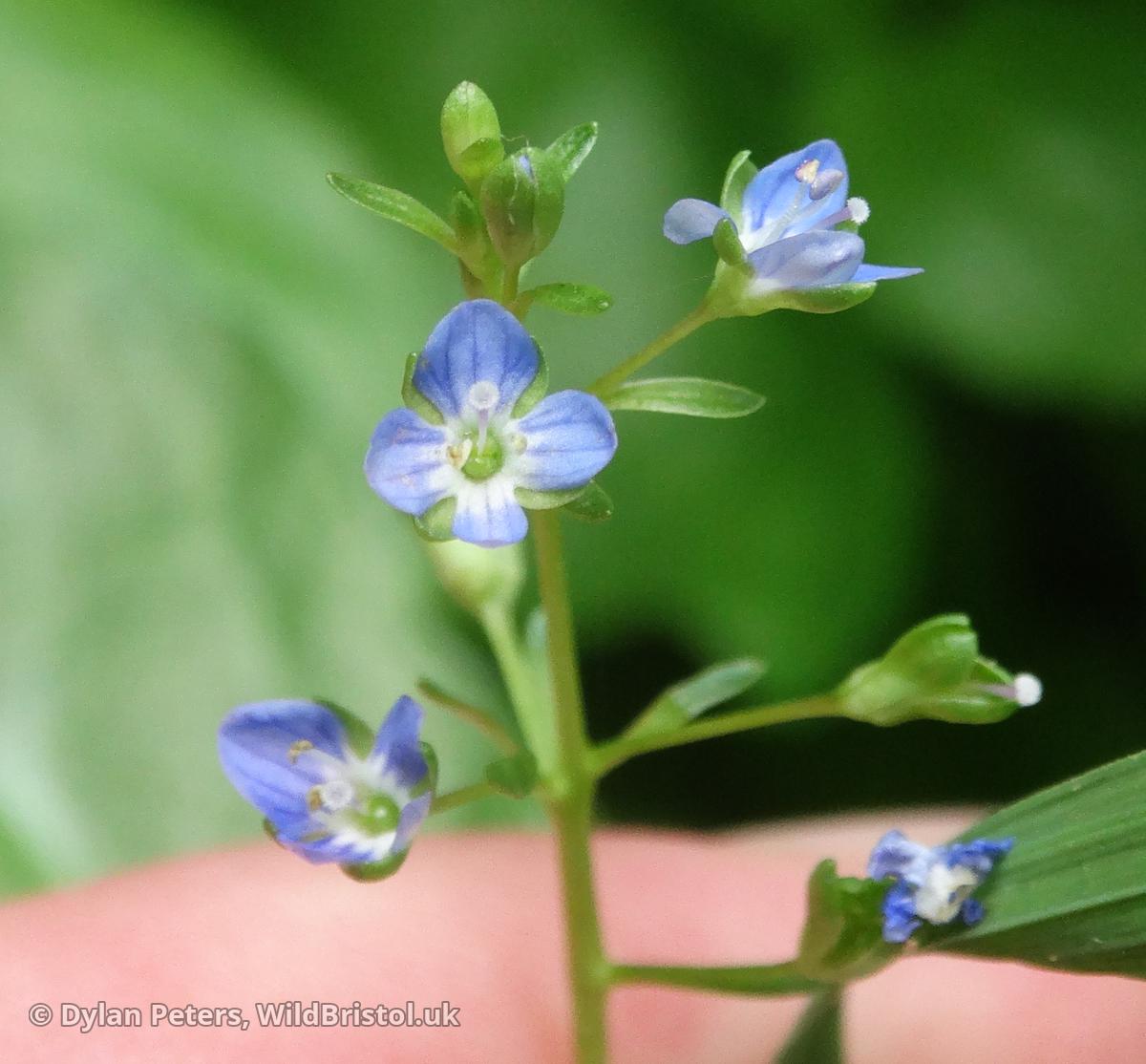
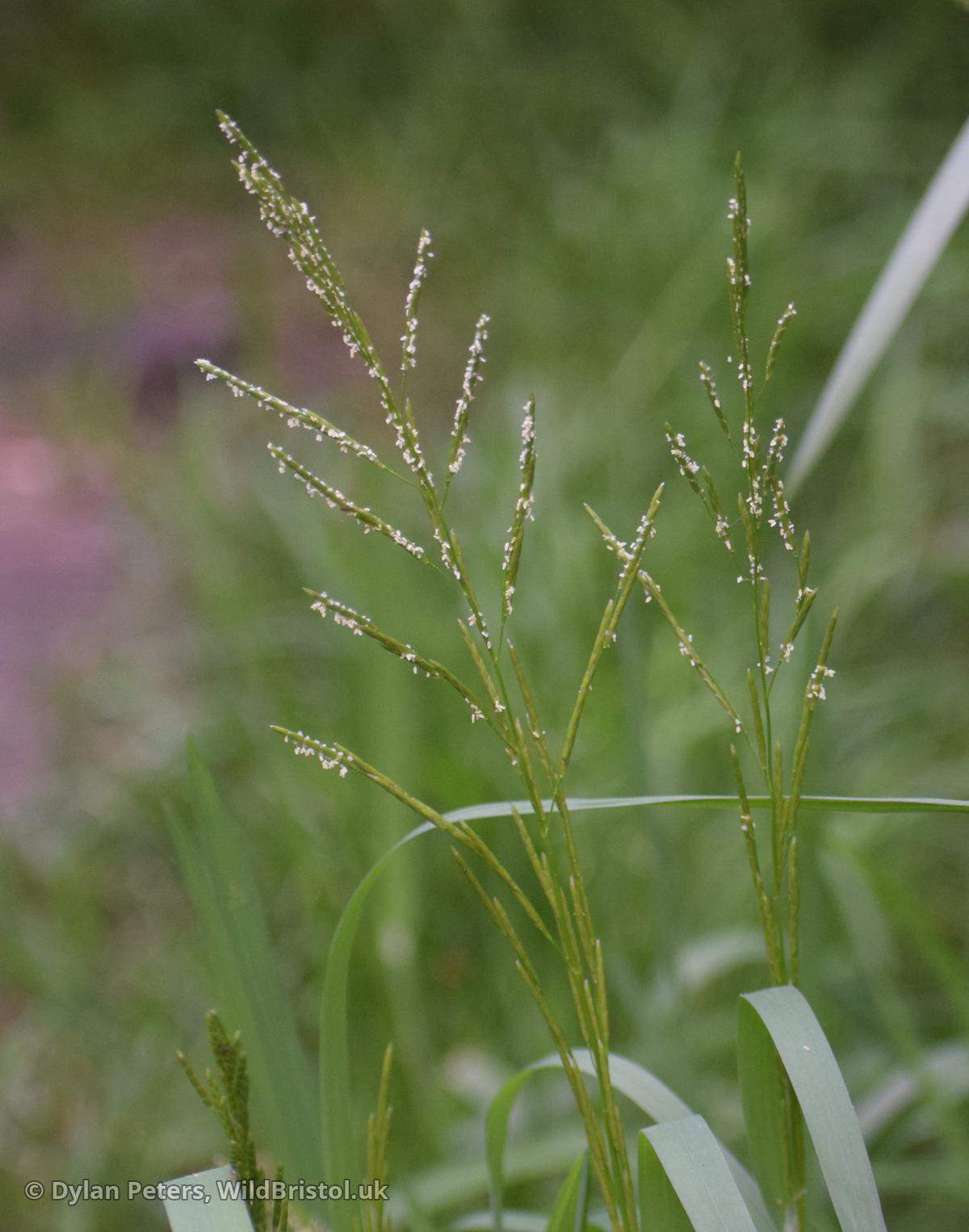
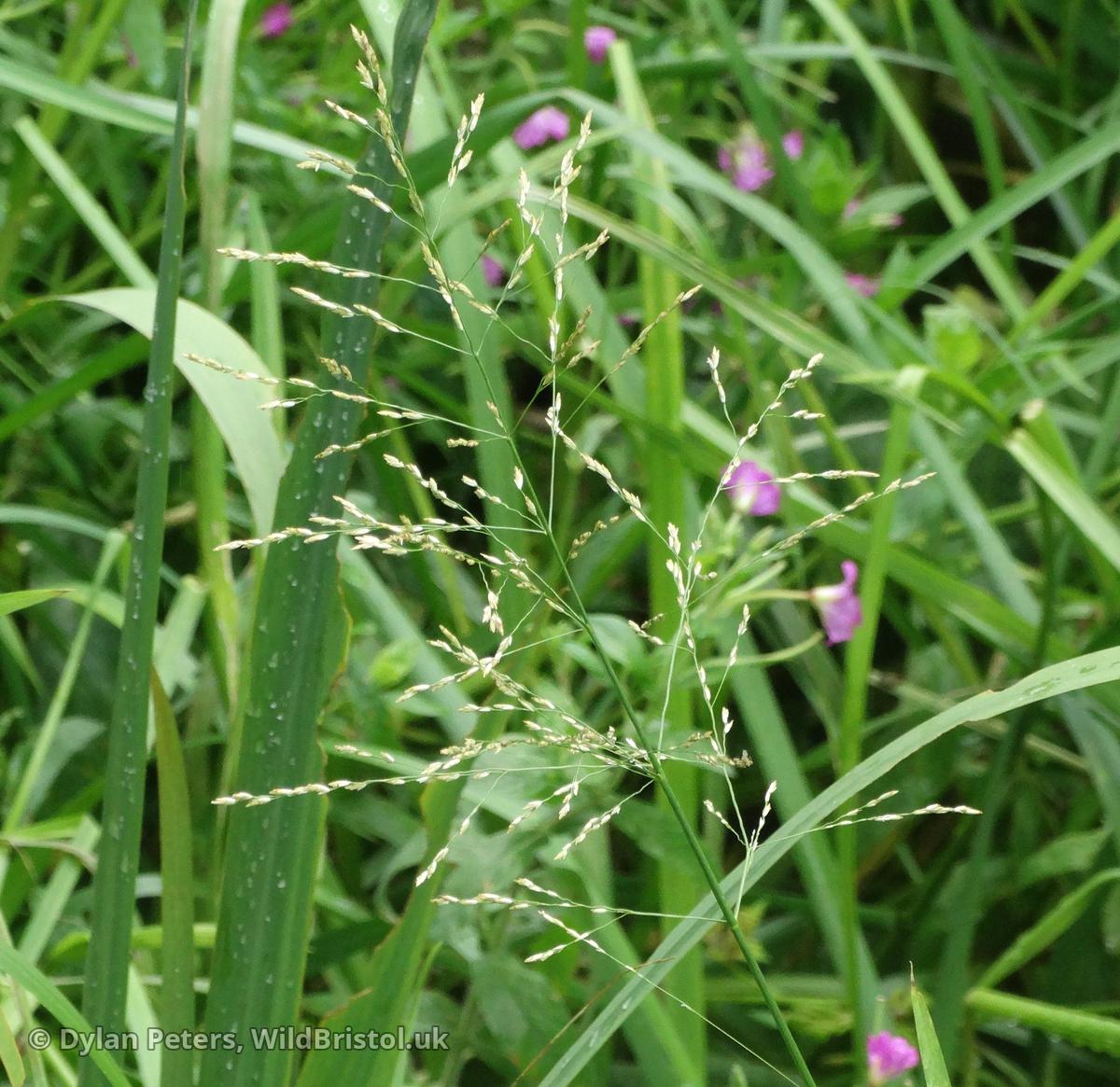
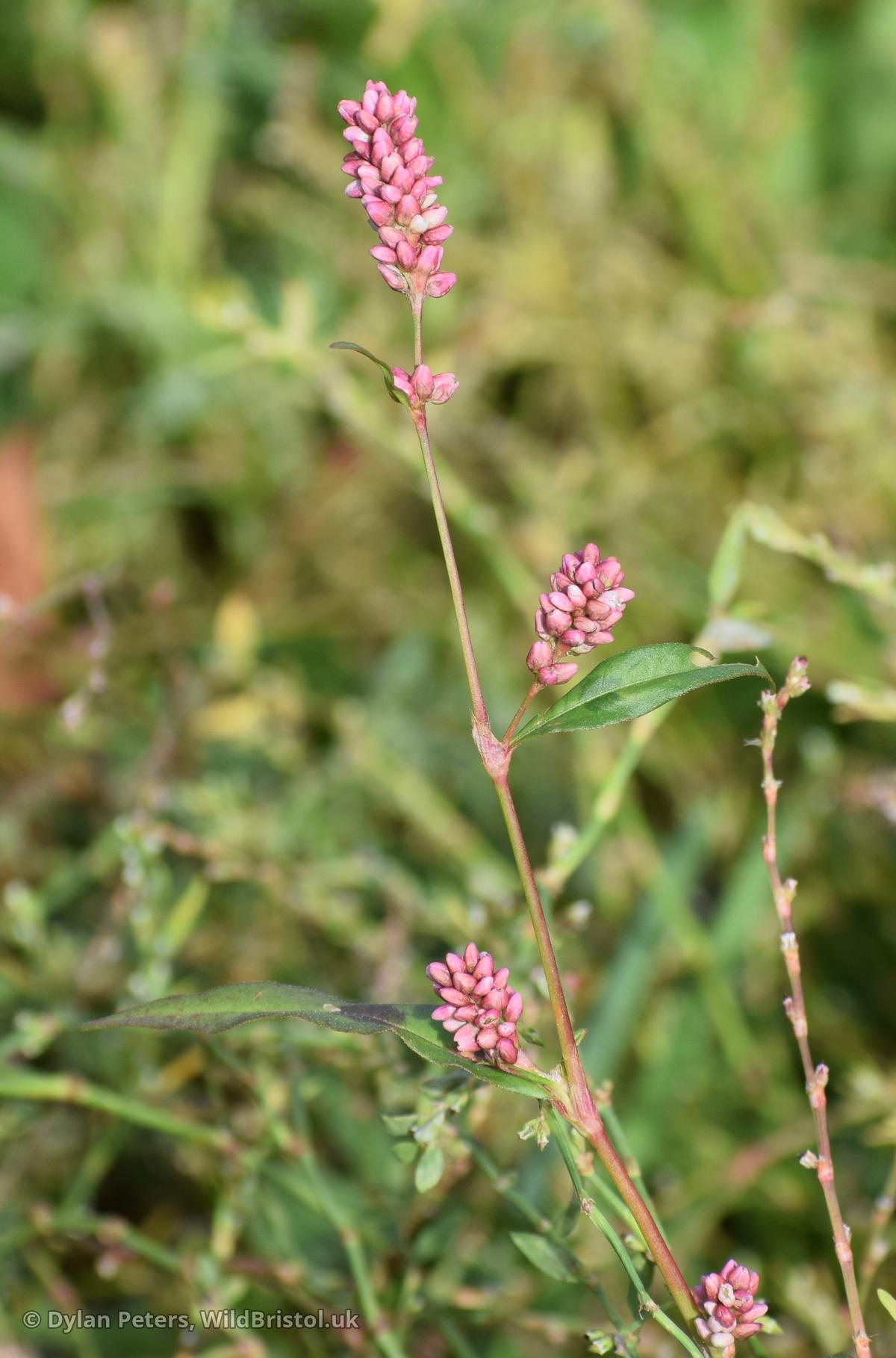
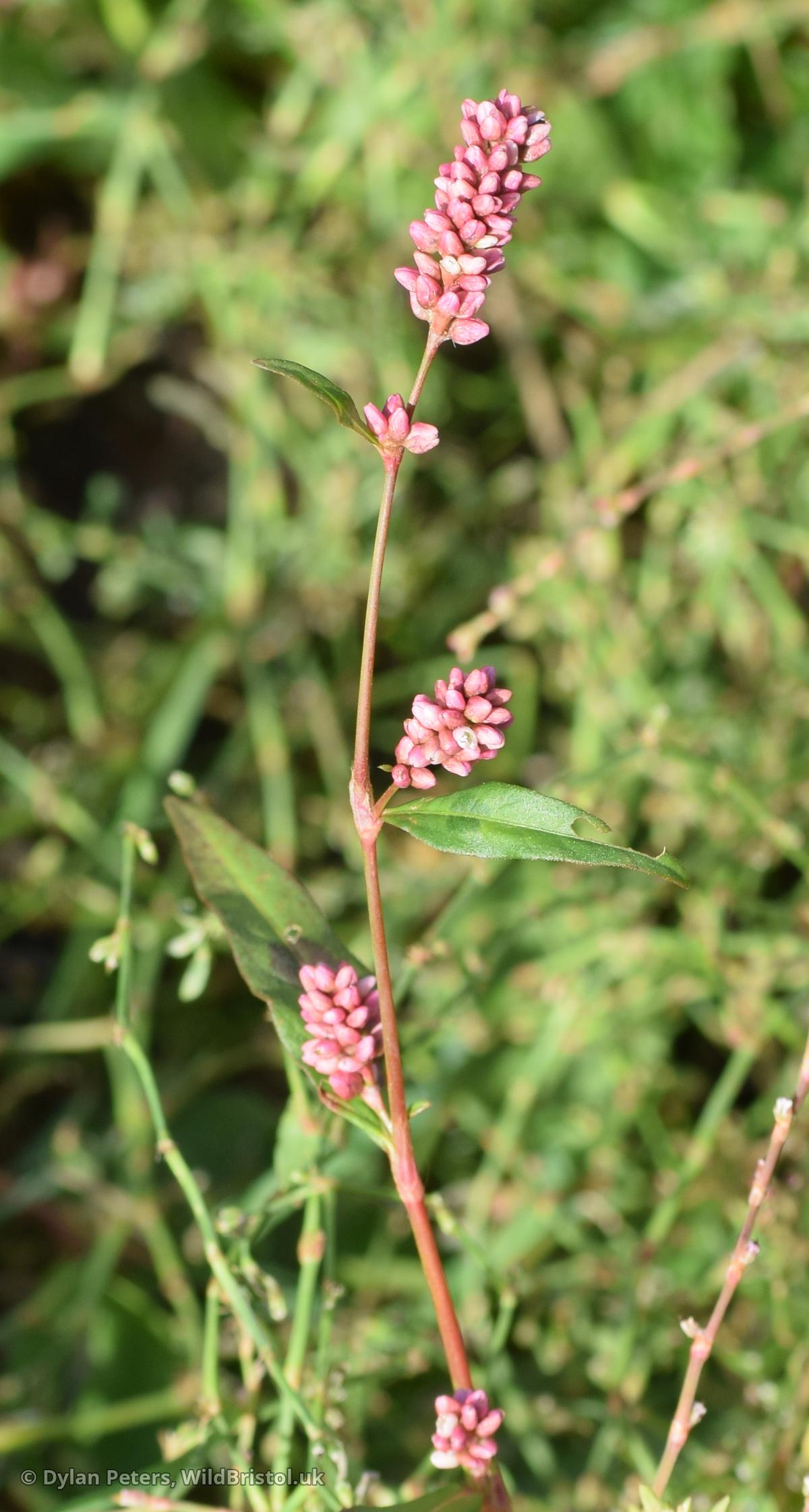
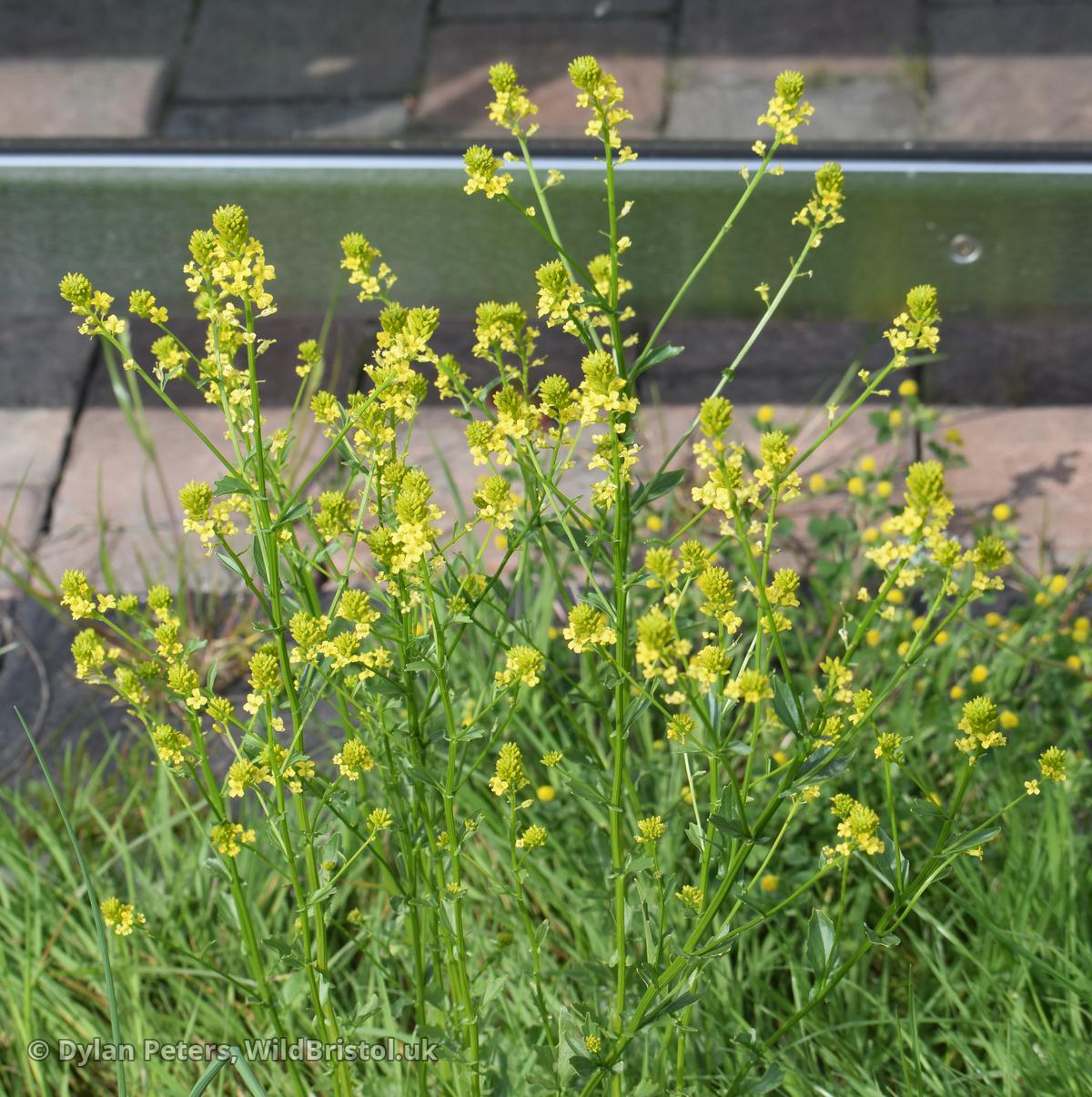
63 historic plants found in and around Horfield:
-
Equisetum fluviatile (Water Horsetail) - Equisetum limosum L. (Smooth Horse-tail) - "Horfield; Swete, Fl." - Brist. Fl.
-
Polystichum aculeatum (Hard Shield-fern) - Polystichum aculeatum Roth. (Prickly Shield Fern) - "Dugar Woods (near Bishopston; now built over), March, 1850, a fine specimen; Herb. Cundall." - Brist. Fl.
-
Vicia sativa ssp. macrocarpa (Large-seeded Vetch) - Vicia sativa L. var. macrocarpa Moris. (Common Vetch, Fatch) - "Waste near Horfield, Gibbons in W. E. C., 1922-3, 210." - Glos. Fl.
-
Lathyrus Aphaca L. (Yellow Vetchling) - "Horfield; T. B. Flower." - Brist. Fl.
-
Melilotus indicus (Small Melilot) - Medicago indica Allioni, M. parviflora Desf. - "Two or three dozen plants in a field of mangolds between Horfield and Charlton, July 1908." - Brist. Fl.
-
Trifolium fragiferum (Strawberry Clover) - Trifolium fragiferum L. (Strawberry-headed Trefoil) - "Horfield Common; Swete and W. E. Green." - Brist. Fl.
-
Malus domestica (Apple) - Pyrus Malus L. var. b. mitis Wallroth. (Crab-tree) - "At the back of Horfield towards Filton Station." - Brist. Fl.
-
Rosa stylosa (Short-styled Field-rose) - Rosa stylosa Desvaux = R. systyla Bastard and Woods. (Columnar-styled Dog-rose) - "Field hedge, Horfield." - Brist. Fl.
-
Rhamnus cathartica (Buckthorn) - Rhamnus catharticus L. (Buckthorn) - "Hedges at Horfield; Swete, Fl." - Brist. Fl.
-
Salix purpurea ssp. purpurea L. (Purple Willow) - Salix purpurea L. (Bitter Purple Willow, Rose Willow) - "Horfield (as S. Helix); Thwaites in Swete, Fl." - Brist. Fl.
-
Salix caprea ssp. caprea L. (Grey Willow) - Salix caprea L. (Great Sallow) - "Hedges between Horfield and Stoke Gifford." - Brist. Fl.
-
Mercurialis annua (Annual Mercury) - Mercurialis annua L. (Annual Mercury, French Mercury) - "Horfield." - Brist. Fl.
-
Euphorbia platyphyllos (Broad-leaved Spurge) - Euphorbia platyphyllos L. (Broad-leaved Warted Spurge) - "Beanfield between Horfield and Filton, 1849; and cornfields, Charlton, 1850 and 1851; J. H. Cundall, Cornfield on the Horfield side of Filton Meads, in plenty from 1879 to 1884 or thereabout. Since that time the field has ceased to be arable. But the plant still occurs rarely amongst crops by the field-path leading to Brentry and Charlton." - Brist. Fl.
-
Epilobium tetragonum ssp. tetragonum (Square-stalked Willowherb) - Epilobium tetragonum L., E. adnatum Griseb. (Long-podded Square-stalked Willow-Herb) - "Stapleton and Horfield; G. H. K. Thwaites. About a new road at Horfield, 1906; Miss Roper." - Brist. Fl.
-
Malva moschata L. (Musk Mallow) - "Wayside hedgebanks about Horfield; Swete." - Brist. Fl.
-
Lepidium coronopus (Swine-cress) - Senebiera Coronopus Poiret., Coronopus Ruellii All. (Swine's Cress, Common Wart Cress) - "Pathway to Dugar; and Horfield Lane, 1849 to 1851; J. H. Cundall." - Brist. Fl.
-
Diplotaxis tenuifolia (Perennial Wall-rocket) - Diplotaxis tenuifolia DC. (Fine-leaved Wall Mustard, Wall Rocket) - "at Horfield; T. B. Flower." - Brist. Fl.
-
Thlaspi arvense (Field Penny-cress) - Thlaspi arvense L. (Penny Cress) - "Formerly in cornfields about Horfield, for several years; but not seen of late." - Brist. Fl.
-
Frangula alnus ssp. alnus (Alder Buckthorn) - Rhamnus Frangula L. (Black Alder) - "Hedges about Horfield; Stephens Cat. (1835). Copses between Horfield and Stapleton; Herb. Stephens." - Brist. Fl.
-
Spergula arvensis ssp. arvensis (Corn Spurrey) - Spergula arvensis L., S. vulgaris Boenn. (Corn Spurrey) - "Stapleton and Horfield; Swete." - Brist. Fl.
-
Lysimachia foemina (Blue Pimpernel) - Anagallis caerulea Schreb., A. femina Mill. (Blue Pimpernel) - "Cornfield at Horfield, 1840; T. B. Flower, Horfield 1843; Thwaites in Herb. Brit. Mus." - Brist. Fl.
-
Rumex pulcher L. (Fiddle Dock) - "Horfield."
-
Galium tricornutum (Corn Cleavers) - Gallium tricorne Stokes. (Rough Corn Bedstraw, Three-flowered Goosegrass) - "Stapleton and Horfield; Herb. Stephens. Cornfield between Horfield Common and Filton Meads, abundant in 1883 and 1885 on land that has now gone out of cultivation. Still among crops by the field-path from Filton Meads to Brentry and Charlton." - Brist. Fl.
-
Cruciata laevipes ssp. laevipes (Crosswort) - Gallium cruciata Scop. (Crosswort) - "Hedgebanks about Horfield; Dr. H. O. Stephens." - Brist. Fl.
-
Vinca minor L. (Lesser Periwinkle) - "Horfield; Swete, Fl." - Brist. Fl.
-
Vinca major L. (Greater Periwinkle) - "Horfield; Swete, Fl." - Brist. Fl.
-
Echium vulgare L. (Viper's Bugloss) - "Cornfields at Horfield and Stapleton; Swete, Fl." - Brist. Fl.
-
Chaenorhinum minus subsp. minus (Small Toadflax) - Linaria viscida Moench., L. minor. Desf. (Least Toadflax) - "Cornfield between Horfield and Filton, 1888." - Brist. Fl.
-
Kickxia elatine subsp. elatine (Sharp-leaved Fluellen) - Linaria Elatina Mill. (Sharp-leaved Fluellin) - "Horfield; T. B. Flower in Phytol. (1840); and Herb. Stephens." - Brist. Fl.
-
Kickxia spuria subsp. spuria (Round-leaved Fluellen) - Linaria spuria Mill. (Round-leaved Fluellin) - "Cornfields at Horfield, 1840; T. B. Flower, and G. H. K. Thwaites in Swete, Fl." - Brist. Fl.
-
Verbascum virgatum (Twiggy Mullein) - Verbascum virgatum Stokes. (Large-flowered Mullein) - "On a wall between Horfield and Westbury; Dr. H. O. Stephens." - Brist. Fl.
-
Galeopsis angustifolia (Red Hemp-nettle) - Galeopsis Ladanum L. (Red Hemp-nettle) - "Horfield." - Brist. Fl.
-
Mentha arvensis x M. aquatica x M. spicata (Tall Mint) = M. x smithiana = Mentha rubra Smith. (Tall Red Mint) - "Horfield; Swete, Fl." - Brist. Fl.
-
Mentha longifolia x M. suaveolens = M. × rotundifolia (False Apple-mint) - Mentha rotundifolia Huds. (Round-leaved Mint) - "Roadside between Westbury and Horfield; S. Freeman in Phytol. 1841, p. 328." - Brist. Fl.
-
Silybum marianum (Milk Thistle) - Mariana lactea Hill., Carduus Marianus L., Silybum Marianum Gaertn. (Milk Thistle) - "Horfield, 1878; W. E. Green." - Brist. Fl.
-
Centaurea cyanus L. (Cornflower) - Centaurea Cyanus L. (Corn Blue-bottle) - "Horfield; Swete, Fl." - Brist. Fl.
-
Filago germanica L. (Common Cudweed) - "Fields between Horfield and Brentry." - Brist. Fl.
-
Gnaphalium uliginosum L. (Marsh Cudweed) - "Horfield." - Brist. Fl.
-
Achillea Ptarmica L. (Sneezewort) - "Between Horfield and Filton; Herb. Stephens and G. H. K. Thwaites in Swete, Between Horfield and Charlton, 1849; Herb. Cundall." - Brist. Fl.
-
Glebionis segetum (Corn Marigold) - Chrysanthemum segetum L. (Corn Marigold) - "occasionally in cornfields at Horfield; Swete, Fl. p. 50." - Brist. Fl.
-
Valerianella dentata Poll. (Narrow-fruited Cornsalad) - Valerianella dentata Poll. (Narrow-fruited Lamb's Lettuce) - "Horfield; G. H. K. Thwaites." - Brist. Fl.
-
Valeriana dioica L. (Marsh Valerian) - Valeriana dioica L. (Small Marsh Valerian) - "Horfield, 1851; Herb. Cundall." - Brist. Fl.
-
Dipsacus sativus (Fuller's Teasel) - Dipsacus Fullonum L. (Fuller's or Clothiers Teasel) - "Horfield; Herb. Stephens." - Brist. Fl.
-
Torilis arvensis ssp. arvensis (Spreading Hedge-parsley) - Torilis infesta Spr. (Spreading Hedge-parsley) - "Cornfields about Horfield; Swete, Fl." - Brist. Fl.
-
Silaum silaus (Pepper-saxifrage) - Silaus flavescens Bernh., S. pratensis Besser. (Sulphur-wort) - "Pastures adjoining Horfield Common." - Brist. Fl.
-
Lemna gibba L. (Fat Duckweed) - Lemna gibba L. (Gibbous Duckweed) - "Westbury; and Horfield; Swete, Fl." - Brist. Fl.
-
Zannichellia palustris L. (Horned Pondweed) - "Horfield; G. H. K. Thwaites in Swete, Fl." - Brist. Fl.
-
Platanthera chlorantha (Greater Butterfly-orchid) - Habenaria chloroleuca Ridley., H. chlorantha Bab. (Common or Greater Butterfly Orchis) - "Formerly plentiful on the Southmead side of Filton, in a small wood which has been destroyed. White." - Brist. Fl.
-
Anacamptis pyramidalis var. pyramidalis (Pyramidal Orchid) - Orchis pyramidalis L., Anacamptis pyramidalis Rich. (Pyramidal Orchis) - "Railway banks near Horfield and at Patchway, 1884." - Brist. Fl.
-
Juncus compressus Jacquin. (Round-fruited Rush) - "Horfield, 1842; Thwaites in Herb. Brit. Mus. Ibid.; Herb. Stephns." - Brist. Fl.
-
Luzula multiflora ssp. multiflora (Heath Wood-rush) - Juncus multiflorum Druce. (Many-headed Wood-rush) - "Copse between Horfield and Stapleton; H. O. Stephens in Swete, Fl. Specimen in his herbarium." - Brist. Fl.
-
Carex panicea L. (Carnation Sedge) - Carex panicea L. (Pink-leaved Sedge) - "Horfield; G. H. K. Thwaites in Swete, Fl." - Brist. Fl.
-
Carex binervis Sm. (Green-ribbed Sedge) - "Horfield; Herb. Stephens." - Brist. Fl.
-
Carex distans ssp. distans L. (Distant Sedge) - Carex distans L. (Loose or Distant-spiked Sedge) - "Horfield; G.H.K. Thwaites in Swete." - Brist. Fl.
-
Carex pallescens L. (Pale Sedge) - "Copse between Horfield and Filton; Dr. H. O. Stephens." - Brist. Fl.
-
Festuca pratensis Huds. (Meadow Fescue-grass) - "Horfield." - Brist. Fl.
-
Festuca pratensis Huds. (Meadow Fescue-grass) var. loliacea Huds., F. pratensis X Lolium perenne (Spiked Fescue-grass) - "Pastures about Redland; Dr. H.O. Stephens. Between Redland and Horfield, 1884 and 1899." - Brist. Fl.
-
Catabrosa aquatica (Whorl-grass) - Catabrosa aquatica Beauv. (Water Whorl-grass) - "Pools on Horfield Common; Herb. Stephens." - Brist. Fl.
-
Avena fatua L. (Wild Oat) - "Horfield." - Brist. Fl.
-
Phalaris arundinacea (Reed Canary-grass) - Phalaris arundinacea L. (Reed-grass, Ribbon-grass) - "Hedgebottoms between Redland Green and Horfield." - Brist. Fl.
-
Poa nemoralis L. (Wood Meadow-grass) - "Copse between Horfield and Filton." - Brist. Fl.
-
Bromus commutatus (Meadow Brome) - Serrafalcus commutatus Bab. (Confused Brome-grass) - "Horfield; G. H. K. Thwaites in Swete, Fl." - Brist. Fl.
-
Bromopsis erecta (Upright Brome) - Bromus erectus Huds. (Upright Perennial Brome-grass) - "Rough pastures between Horfield Common, Filton Meads, and Charlton." - Brist. Fl.